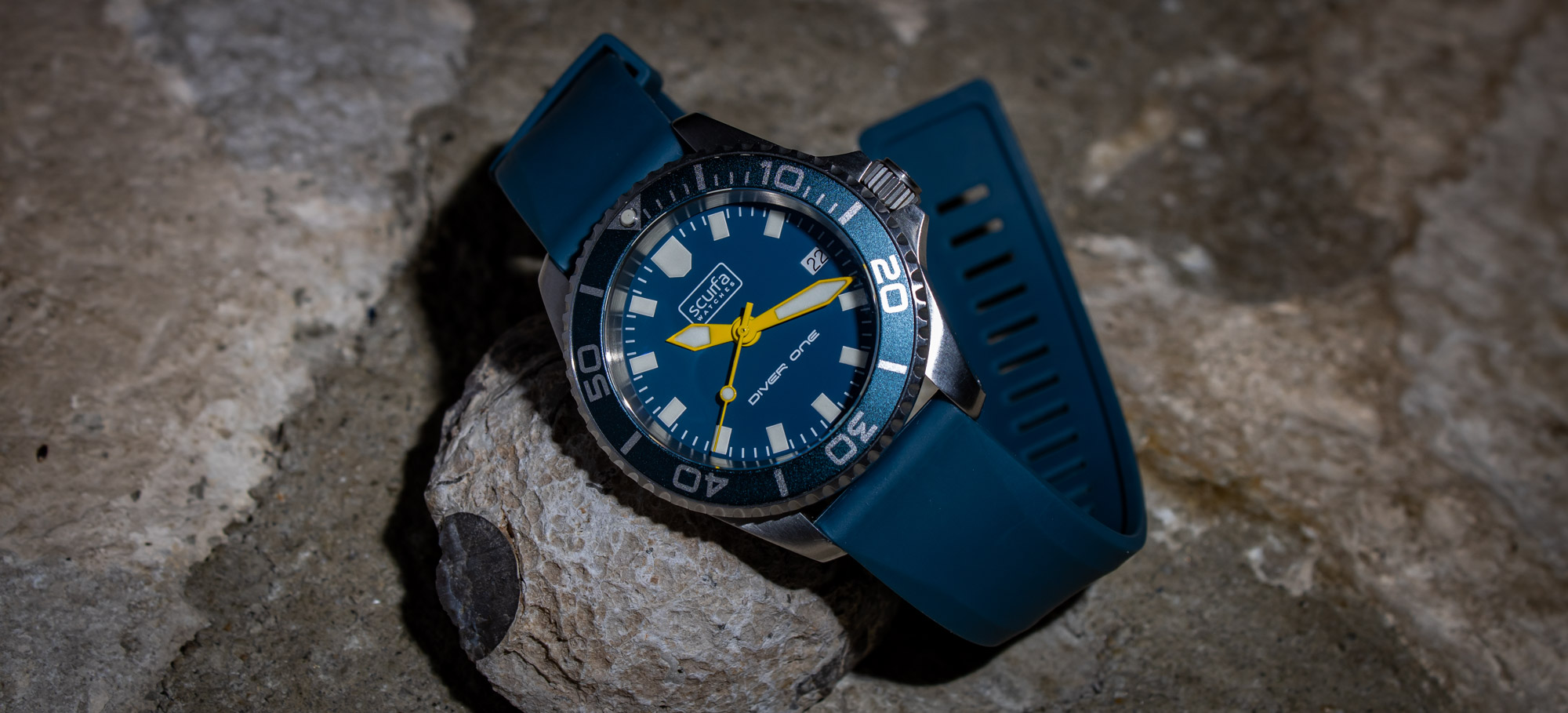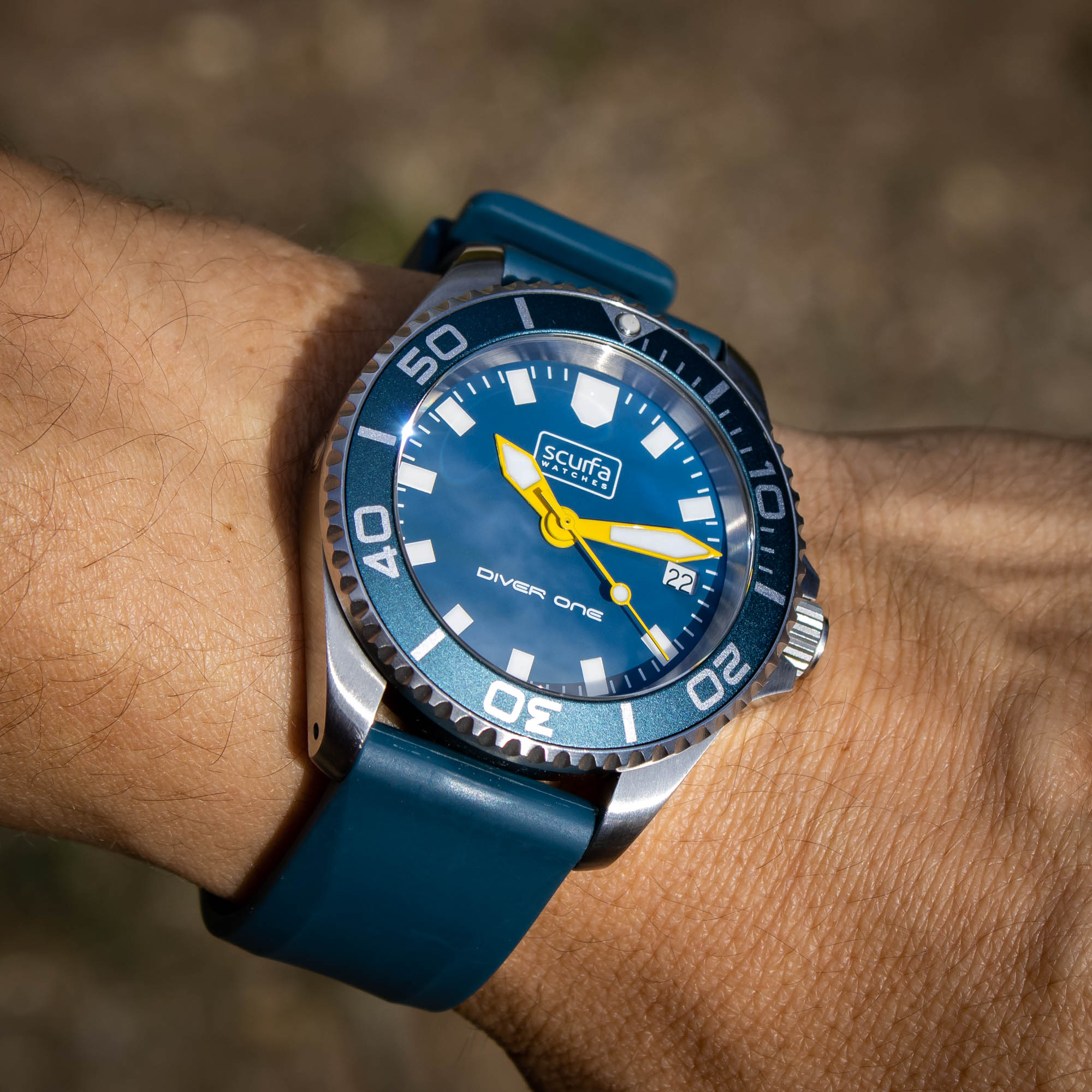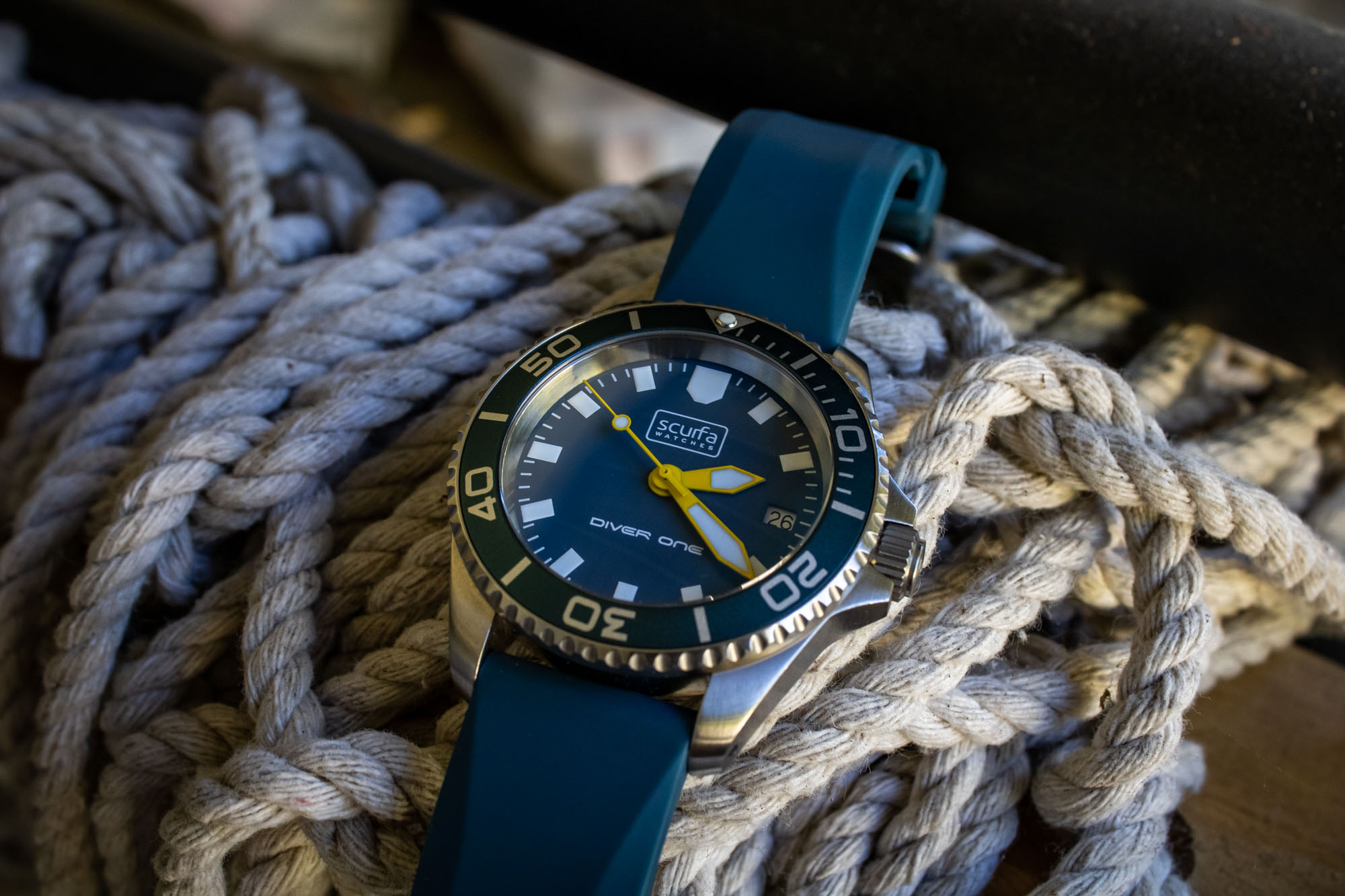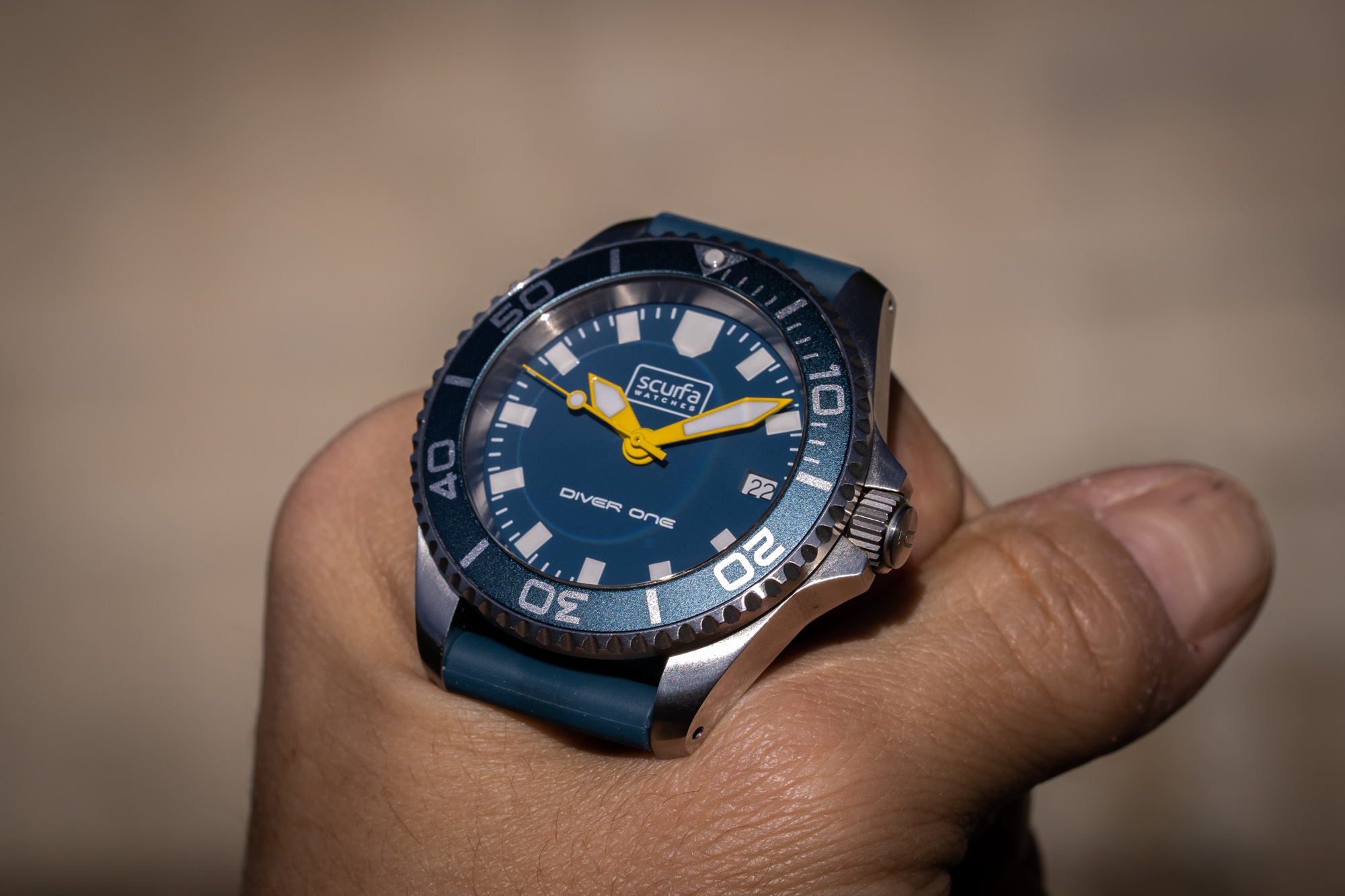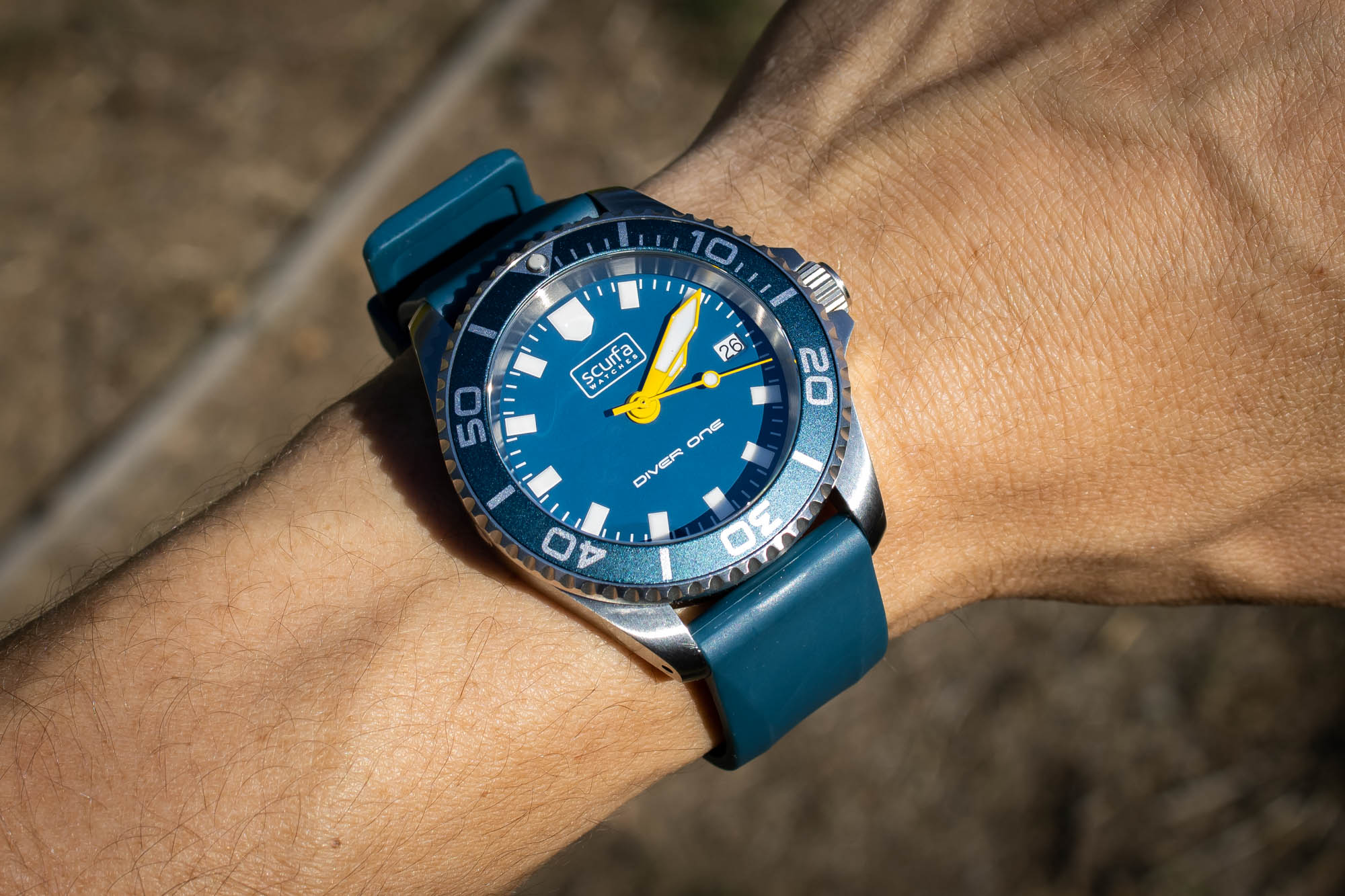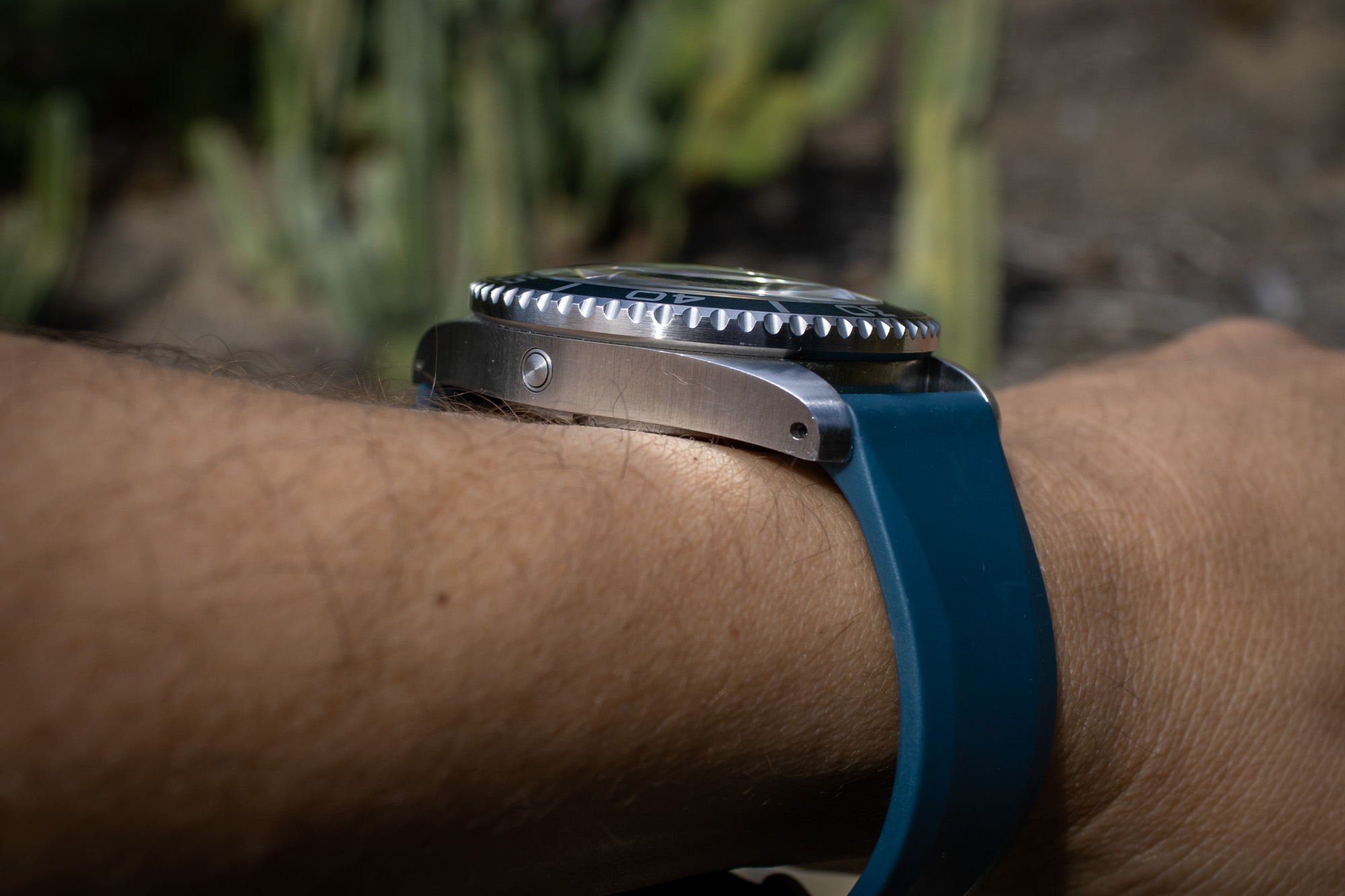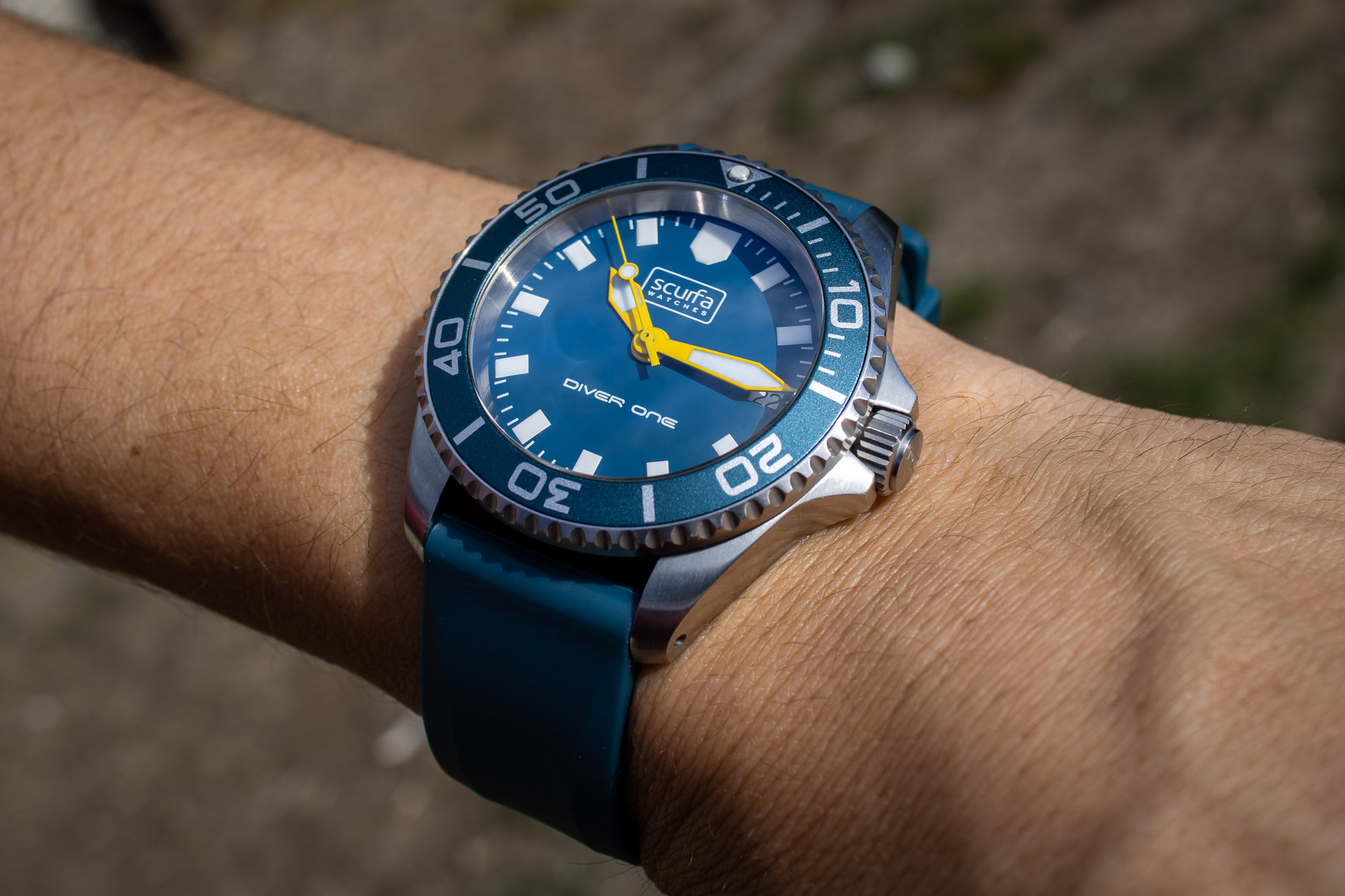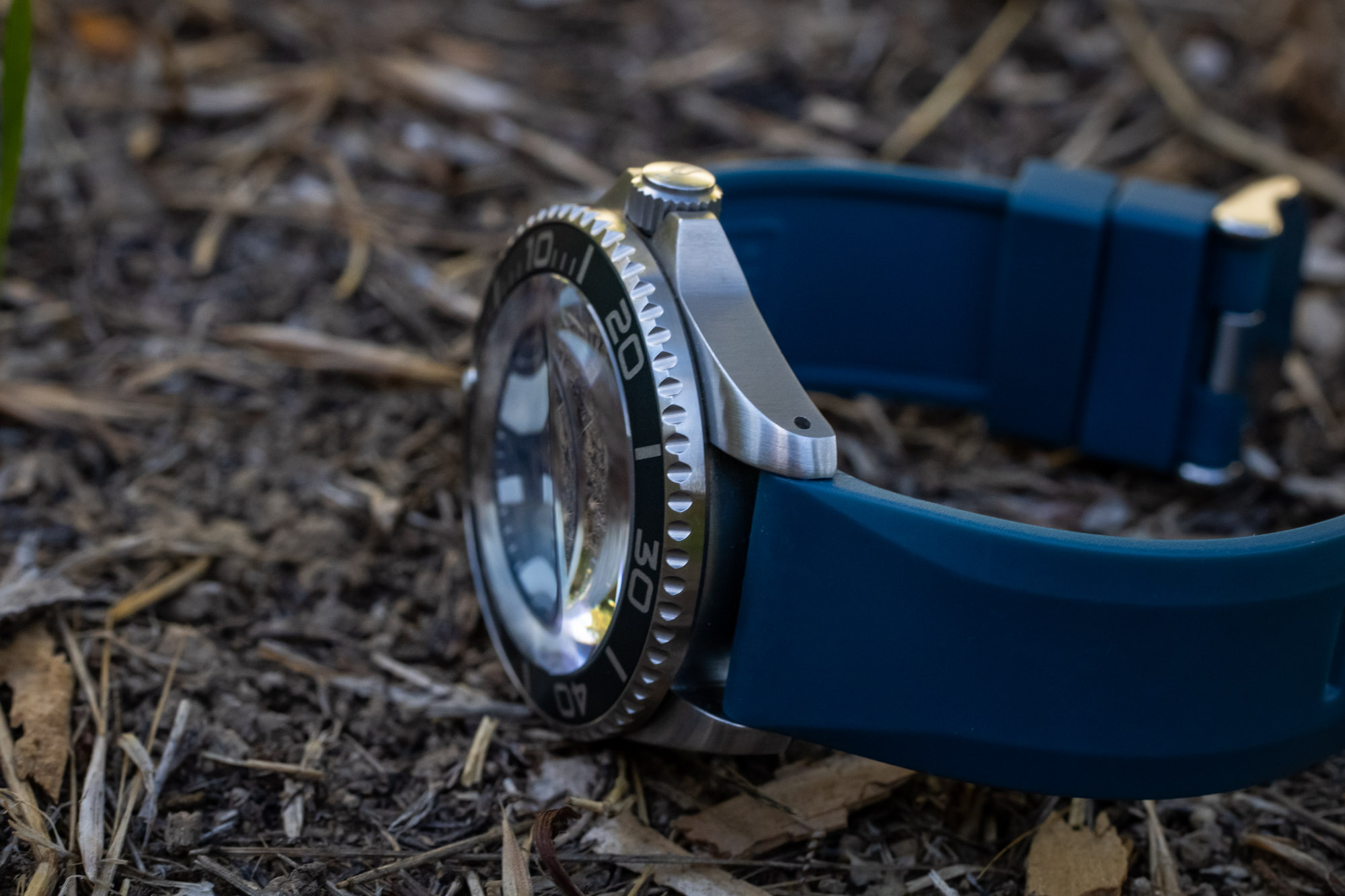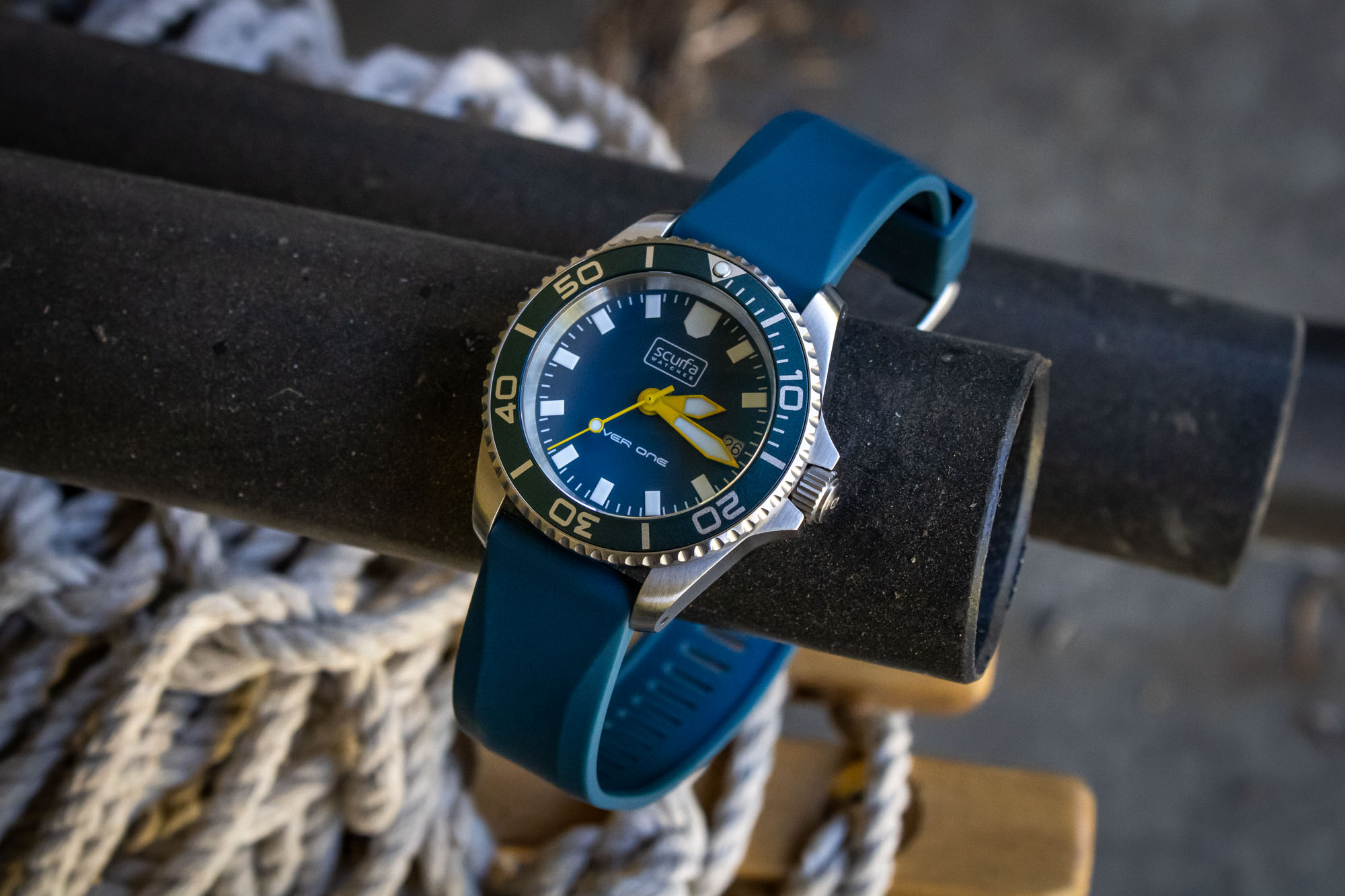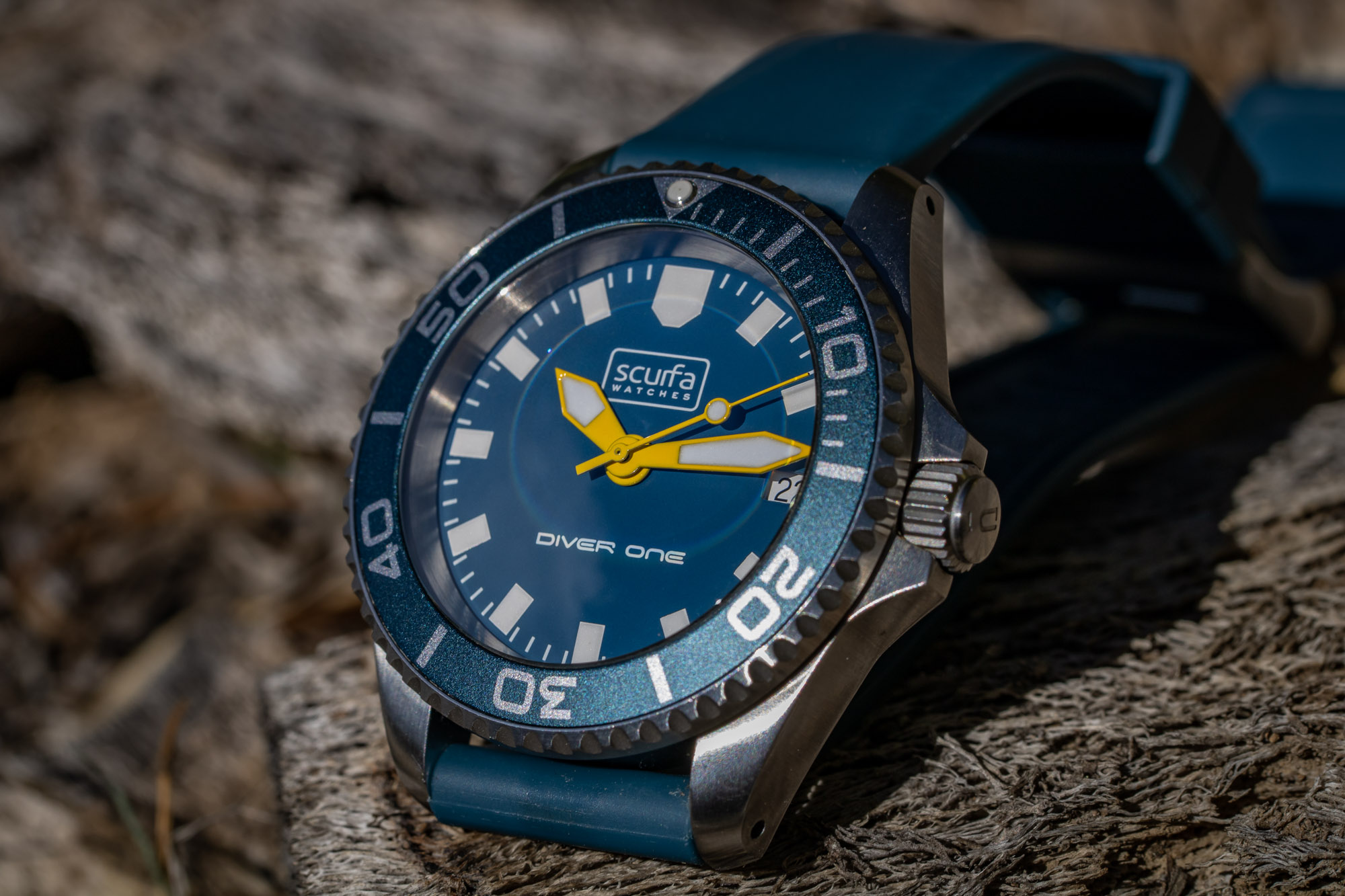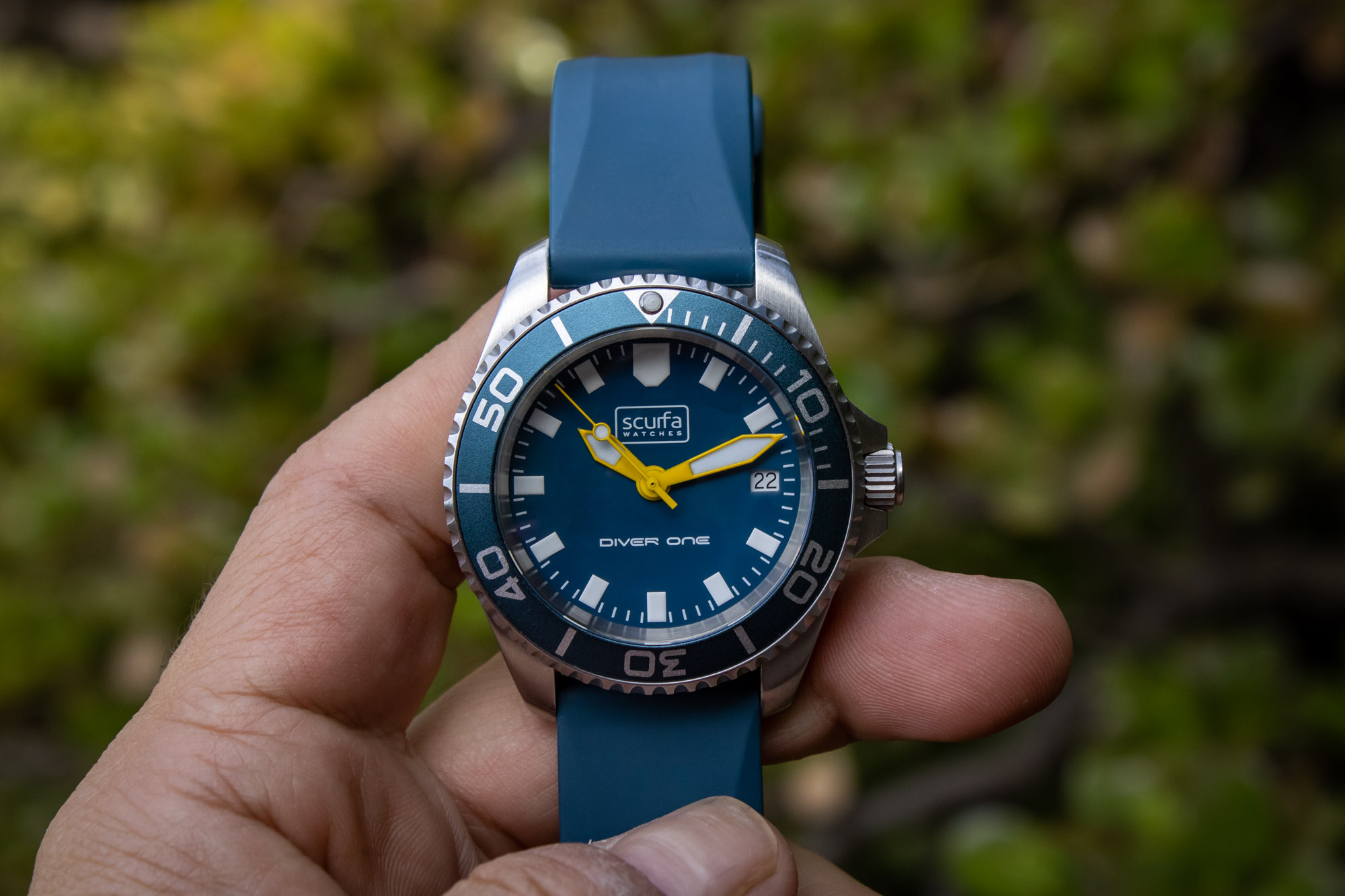
In addition to being one of the most commonly misunderstood concepts in watchmaking, the helium escape valve might also be one of the absolute least useful features that a wristwatch can have in everyday life. Outside of a very small group of people consisting solely of commercial saturation divers and those with other niche professions that must spend extended periods of time living and working inside highly pressurized environments, no one actually needs a helium gas escape valve on their watch. Additionally, unlike many purpose-built dive watch features, such as timing bezels or wetsuit extension systems, that can have secondary uses outside of diving, a helium escape valve has zero practical applications beyond allowing trapped gas molecules to exit the watch in a controlled manner. This means that unless you find yourself actively in the decompression stage after spending multiple days inside a sealed pressurized chamber, then the helium escape valve on your watch is completely useless. That said, countless watch collectors appreciate helium escape valves for the innovation they represent and for their connection to some of the most purpose-built timepieces ever created. However, if the primary reason people enjoy helium escape valves is for the utilitarian concept behind them, having a luxury dive watch fitted with one ultimately represents somewhat of a paradox.
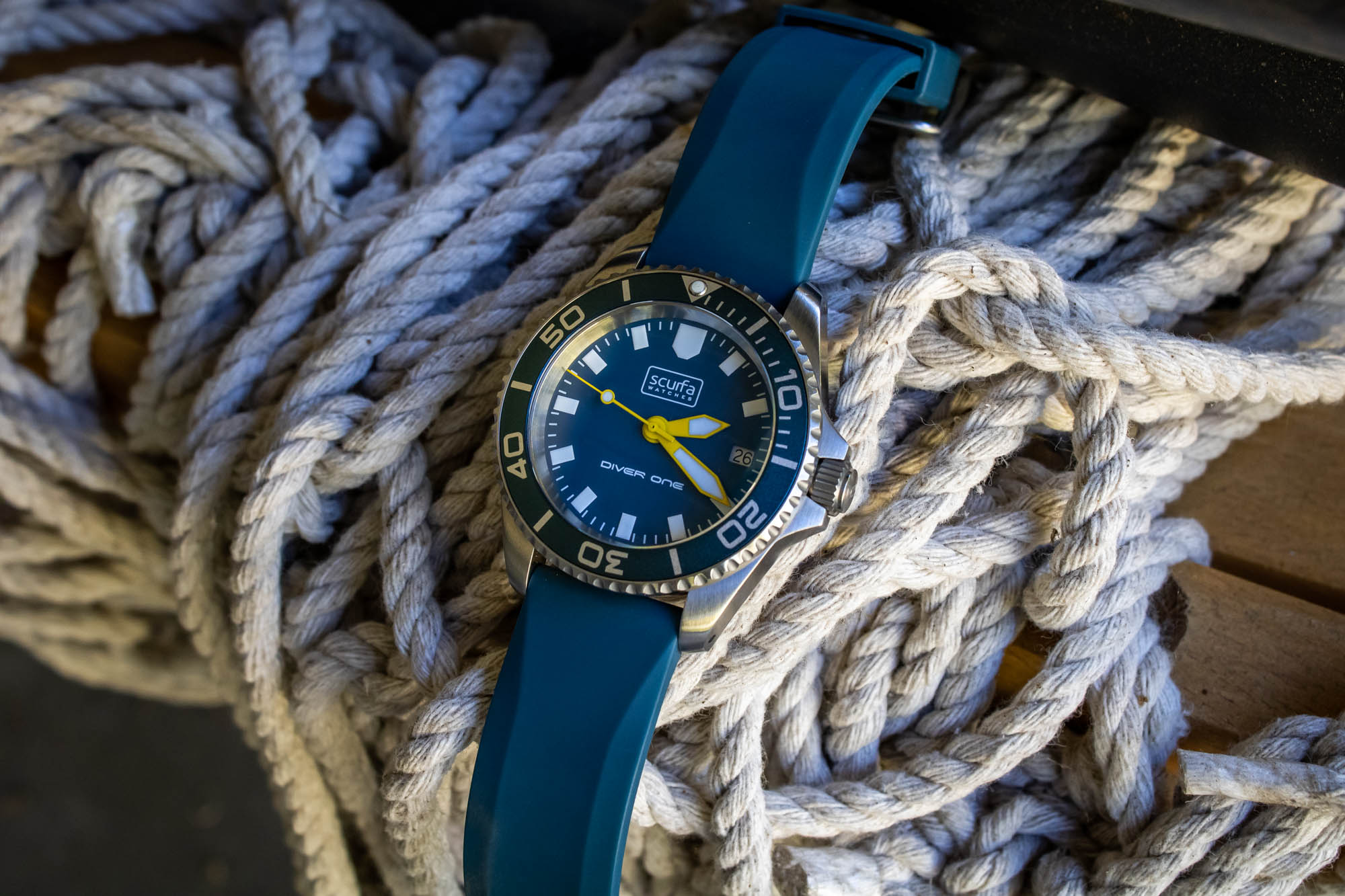
From a technical standpoint, there really isn’t anything special about the design or construction of a helium escape valve that makes producing one inherently expensive to manufacture, and you will therefore find them fitted to dive watches that cost as little as a few hundred dollars. However, you will also find helium escape valves on luxury dive watches, such as the Rolex Sea-Dweller and Omega Seamaster, and regardless of how capable these timepieces may be, they ultimately aren’t all that practical when it comes to actually being used for their original intended purpose, simply due to their high price tags and the similarly high possibility that they will either be damaged or lost while their owners are working at the bottom of the ocean. Although we can all appreciate luxury dive watches as finely crafted technological showcases, it’s undeniable that when it comes to helium escape valves and saturation diving watches, in general, a reliable low-cost model is ultimately most in line with the true spirit of this particular category of purpose-built timepieces.
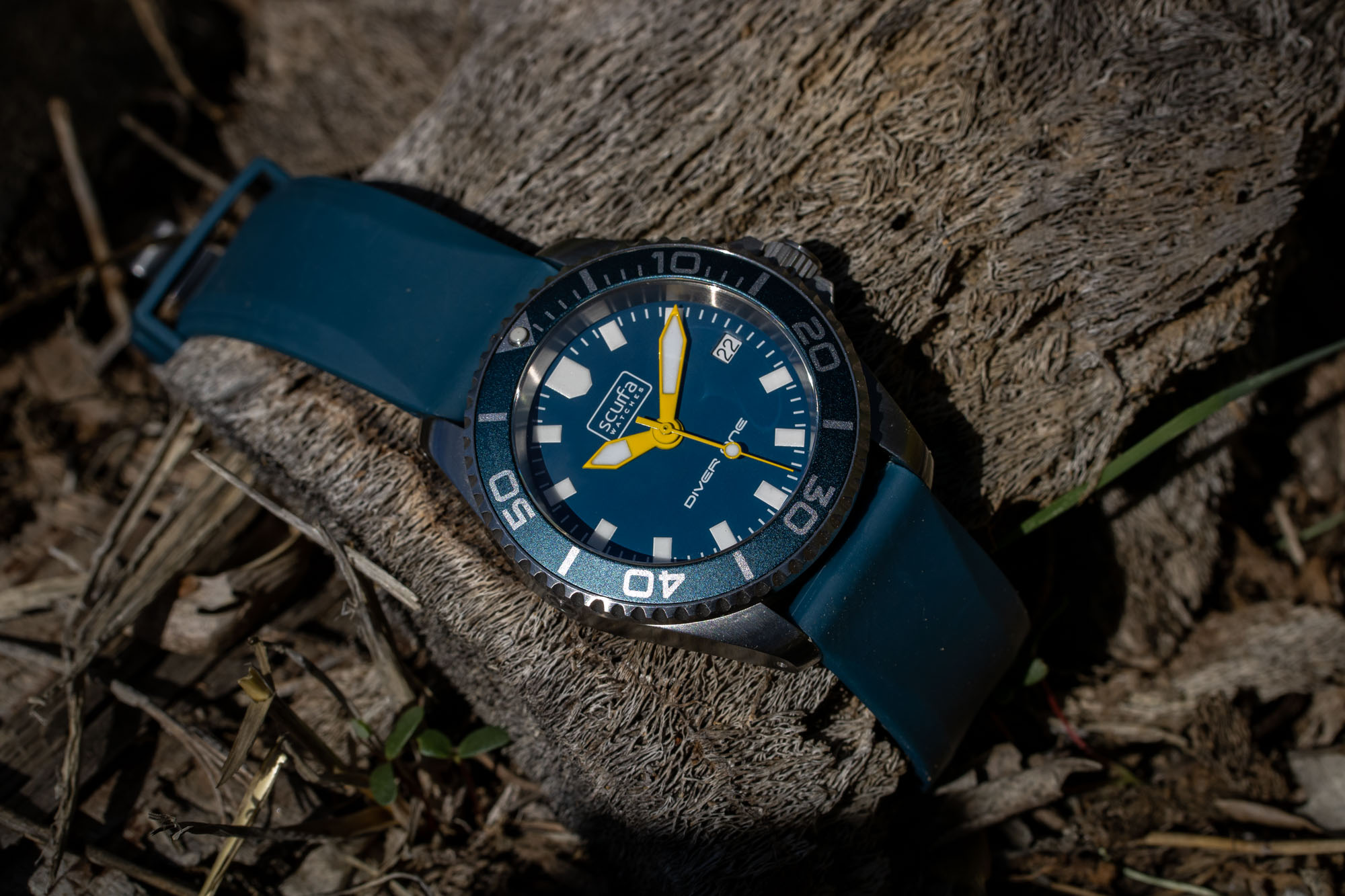
In fact, the watch brand Scurfa was originally created in 2013 by a professional saturation diver and watch enthusiast named Paul Scurfield so that he and his colleagues could have a well-made and affordable timepiece to use while on the job. Divers like Scurfield were left without practical options when the rising values of models from brands like Rolex and Omega made their existing watches too valuable to risk using in such demanding environments with an inherently high risk of damage. Although a helium escape valve can often be little more than a marketing gimmick on certain watches, there is a legitimate reason for Scurfa to include it on many of its models, due to the fact that the entire original purpose of the company was to cater to saturation divers and their support crews. While the Rolex Sea-Dweller will likely always be the watch that first comes to people’s minds when they think of helium escape valves, the timepiece that actually best represents a practical implementation of this feature exists at the complete opposite end of the price spectrum, and it is the Scurfa Diver One D1-500.
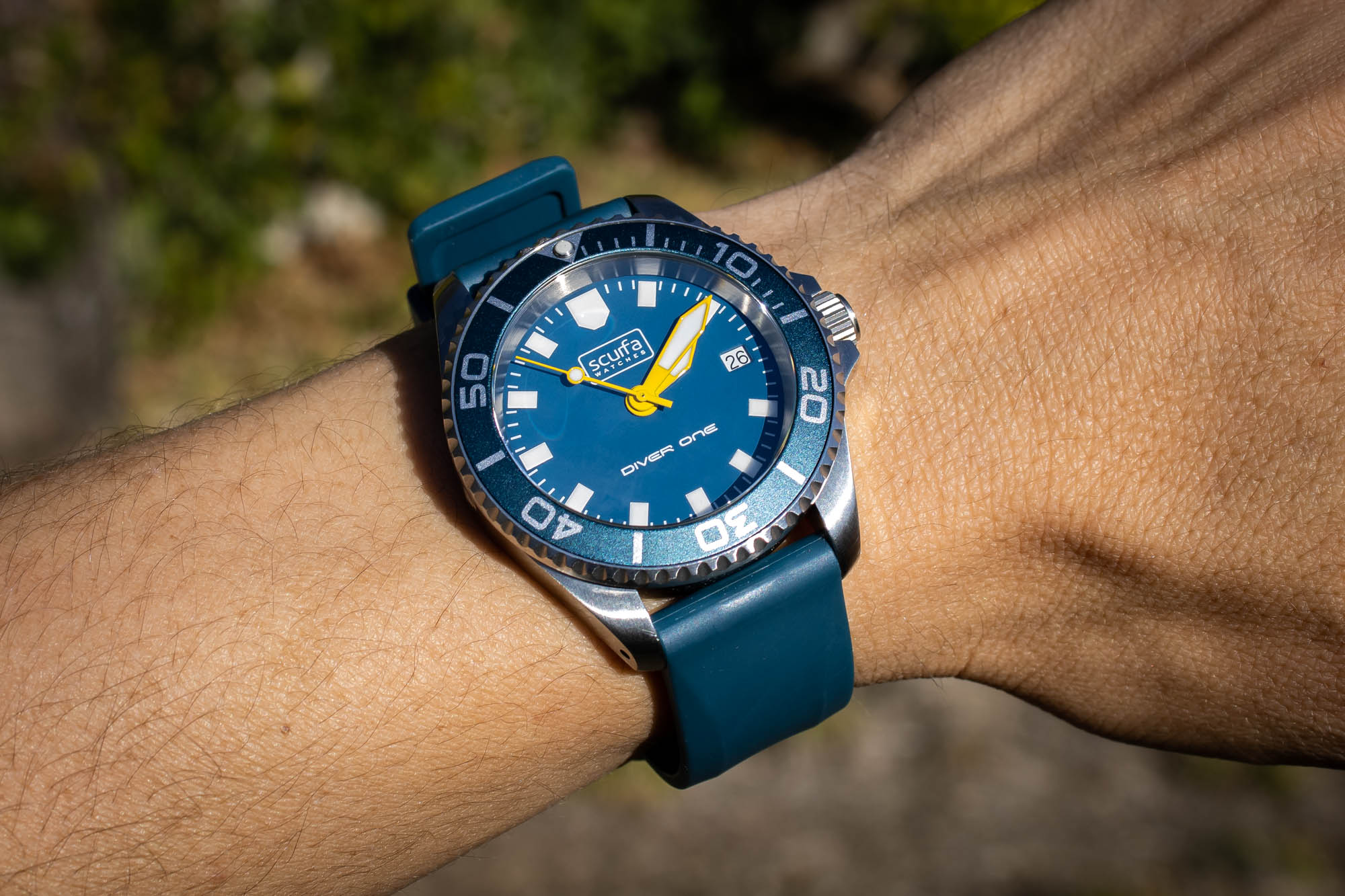
Scurfa now produces a variety of different watches, but the Diver One is the brand’s original model and the most purpose-built offering currently available in its lineup. The overall layout and proportions are somewhat similar to what you get from something like an early Rolex Sea-Dweller or MilSub, although it has been built to modern standards and with more of a relaxed and contemporary overall aesthetic. Although the Scurfa Diver One D1-500 checks a lot of enthusiast-driven boxes and is available in a number of different bright and vibrant colors, it is first and foremost designed to be a functional tool for commercial divers. Because of this, it lacks certain details that you might expect to find on a watch with such a strong following among die-hard collectors and enthusiasts. With that in mind, what the Scurfa Diver One ultimately represents is the most practical expression of what a watch with a helium escape valve should be, which is an affordable yet well-made timekeeping tool that is purpose-built to handle the unique environments associated with saturation diving.
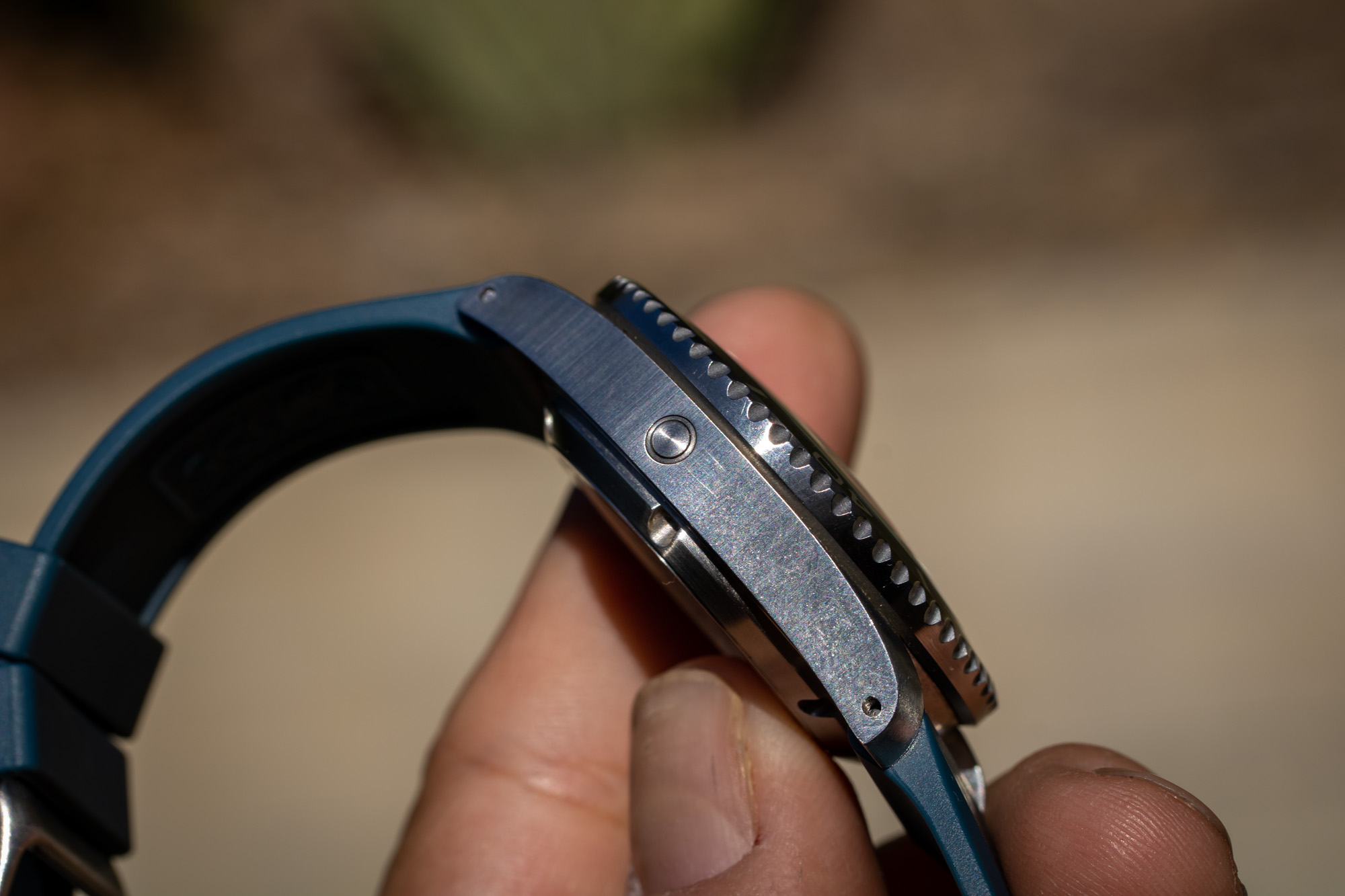
Crafted from either 316L stainless steel or grade 2 titanium, the case of the Scurfa Diver One D1-500 measures 40mm in diameter by 47.7mm lug-to-lug with an overall thickness of 14.4mm. This includes the 4.6mm-thick domed sapphire crystal that sticks up above the edge of the bezel and features a blue anti-reflective coating on its underside surface. Surrounding the crystal is a 120-click unidirectional rotating timing bezel that is fitted with an anodized aluminum insert. The bezel action is incredibly smooth and symmetrical, offering motion that I would consider to be almost as good as what exists on something like the Tudor Black Bay. The lugs of the watch are set 20mm apart and have drilled holes to facilitate easy strap changes. While the cases of the gloss dial models feature bevels on the lugs with high-polished sides, the standard stainless steel and titanium models all have matte dials and include simple squared-off edges on their lugs, with cases that have entirely brushed surfaces. On the side of the case at 3 o’clock sits a 7mm screw-down crown that is signed with the Diver One collection’s “D1” logo and features four internal gaskets. This works in conjunction with the solid screw-down caseback to help create a generous 500 meters of water resistance.
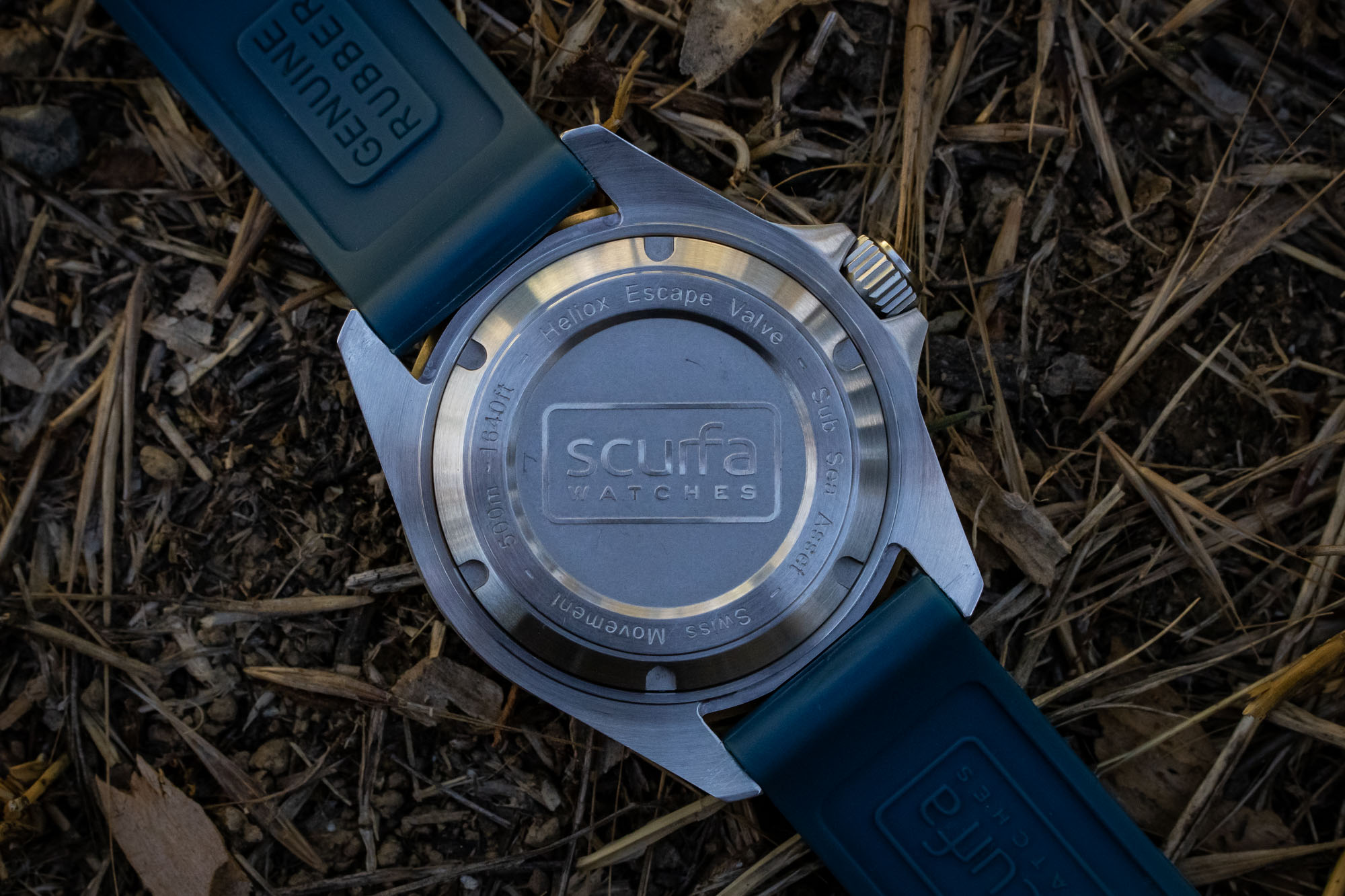
On the side of the case at 9 o’clock is an automatically actuated helium escape valve, although in all of Scurfa’s literature, you will see this detail referred to as a “Heliox escape valve,” as Heliox is the name of the oxygen/helium mixture often used by saturation divers. The design of Scurfa’s Heliox escape valve has been personally tested by Paul Scurfield himself at different depths and using different gas mixtures. Since Paul and his colleagues actually use his brand’s watches while on the job, you can be relatively certain that the valve on the Scurfa Diver One D1-500 is entirely capable of performing as it should in real-world scenarios. Realistically speaking, most people will never need a helium escape valve; however, if we are being completely honest with ourselves, most people also don’t need the vast majority of the other features and complications found on tool watches. Additionally, if you are interested in owning a watch with a helium escape valve because you appreciate it from a technology and innovation standpoint, having one that is proven to perform and is actually used by real-life saturation divers is arguably the most authentic way of owning an example of this particular purpose-built dive watch feature.
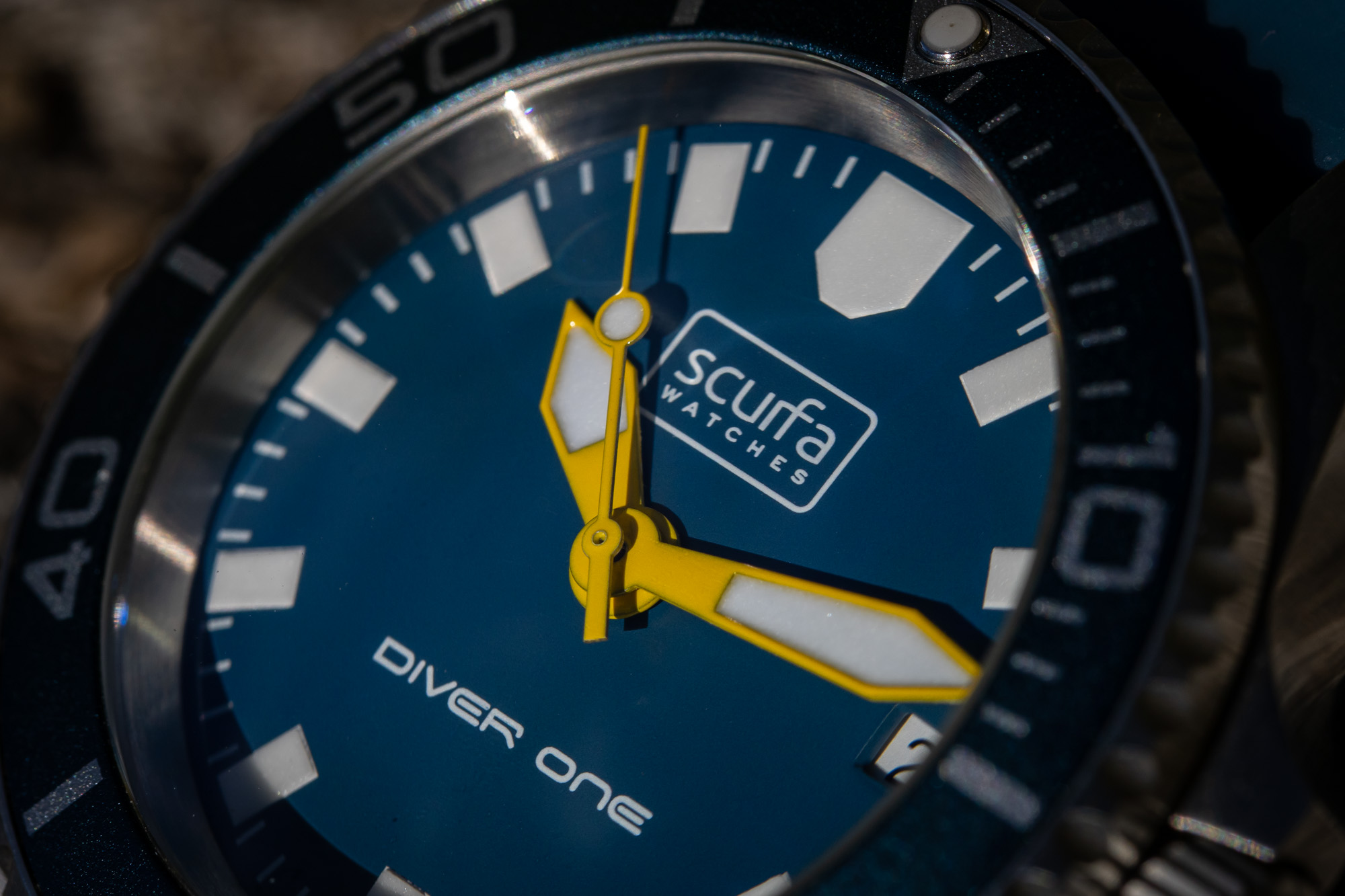
Sitting below the crystal is a flat dial with an entirely printed design. In addition to offering a variety of different colors and with either matte or gloss finishes, Scurfa also offers the Diver One in both date-displaying and no-date formats, with the calendar-equipped models swapping out the 3 o’clock marker for a rectangular date window. Regardless of their differences, all of the dials follow the same core layout, with rectangular hour markers paired with a distinct six-sided shape to denote the 12 o’clock location. The upper half of the dial receives Scurfa’s logo, while the lower half has the Diver One name. This makes up the entirety of the text that appears on the dial, with a simple minutes track printed along the periphery for a clean and highly legible display. At the center of the dial sits a set of extra-wide sword-shaped hands that are available in a variety of different colors and finishes depending on the specific dial fitted to the watch. All three of the hands, plus the pip on the bezel and each of the hour markers receive a healthy application of Grade A Super-LumiNova BGW9, which provides the Scurfa Diver One D1-500 with a bright blue-glowing display in the dark.
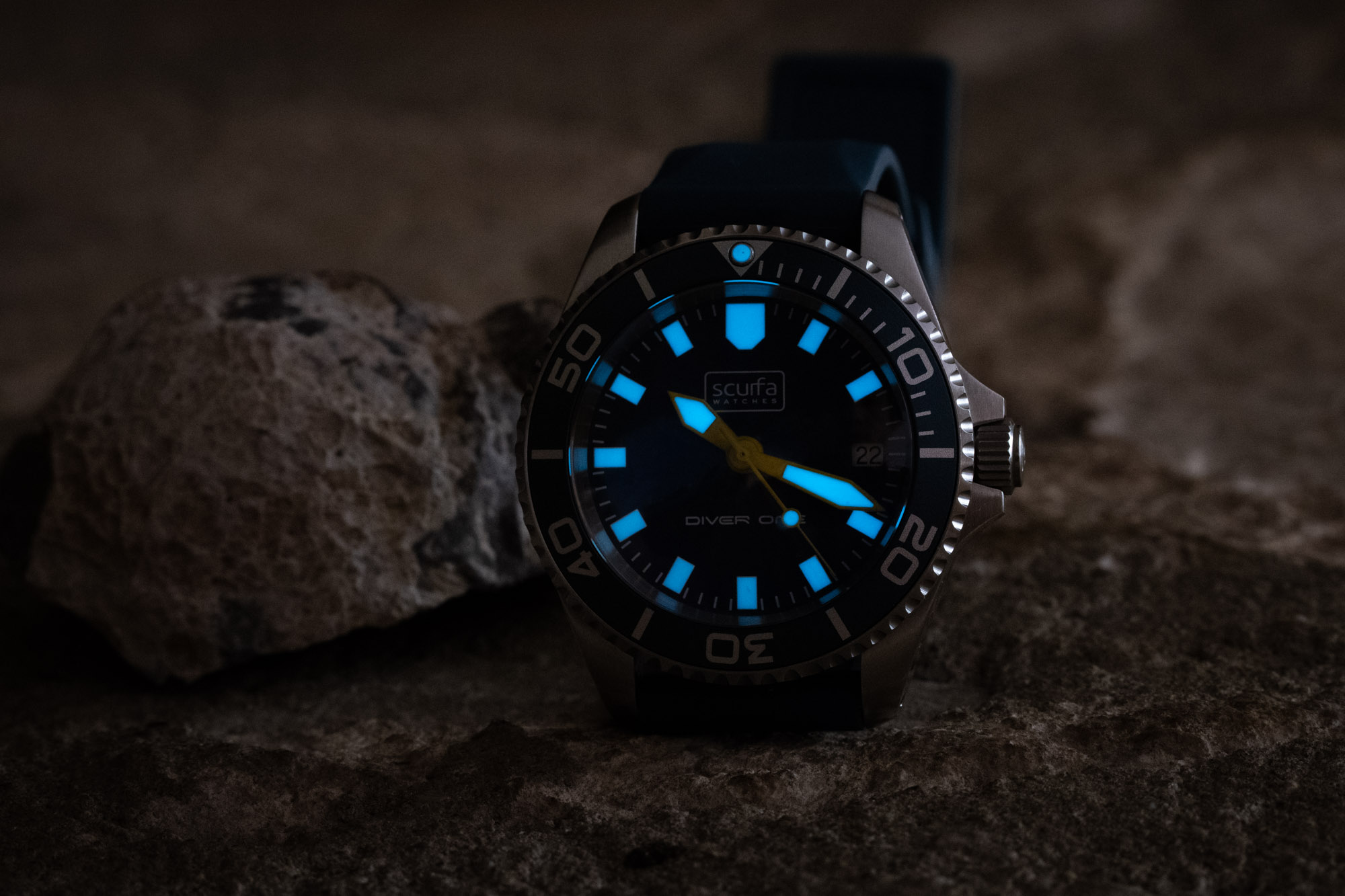
Mechanical movements will always be the preference of most purists and enthusiasts, but when it comes to flat-out durability and performance, quartz is almost always the superior option. Fundamentally more accurate than mechanical calibers, quartz movements are also inherently less susceptible to the effects of impacts and magnetism. While they do need to have their batteries replaced every several years, a reliable quartz caliber promises accurate and drama-free performance, making it the ideal choice for a performance-oriented tool watch. At the heart of the Scurfa Diver One D1-500 is the Ronda 715SM quartz movement, which is a five-jewel, Swiss-made caliber that features gold-plated components and offers a five-year battery life with an EOL indicator (no-date models are powered by the Ronda 713SM). While it’s hard to truly get excited about standard battery-powered quartz movements, these Ronda calibers are proven designs and represent entirely appropriate choices for a utilitarian model like the Scurfa Diver One. Additionally, one other nice detail is that rather than securing the movement inside the case using a plastic spacer like on most affordable quartz watches, Scurfa uses metal movement holders on all of its current-production models.
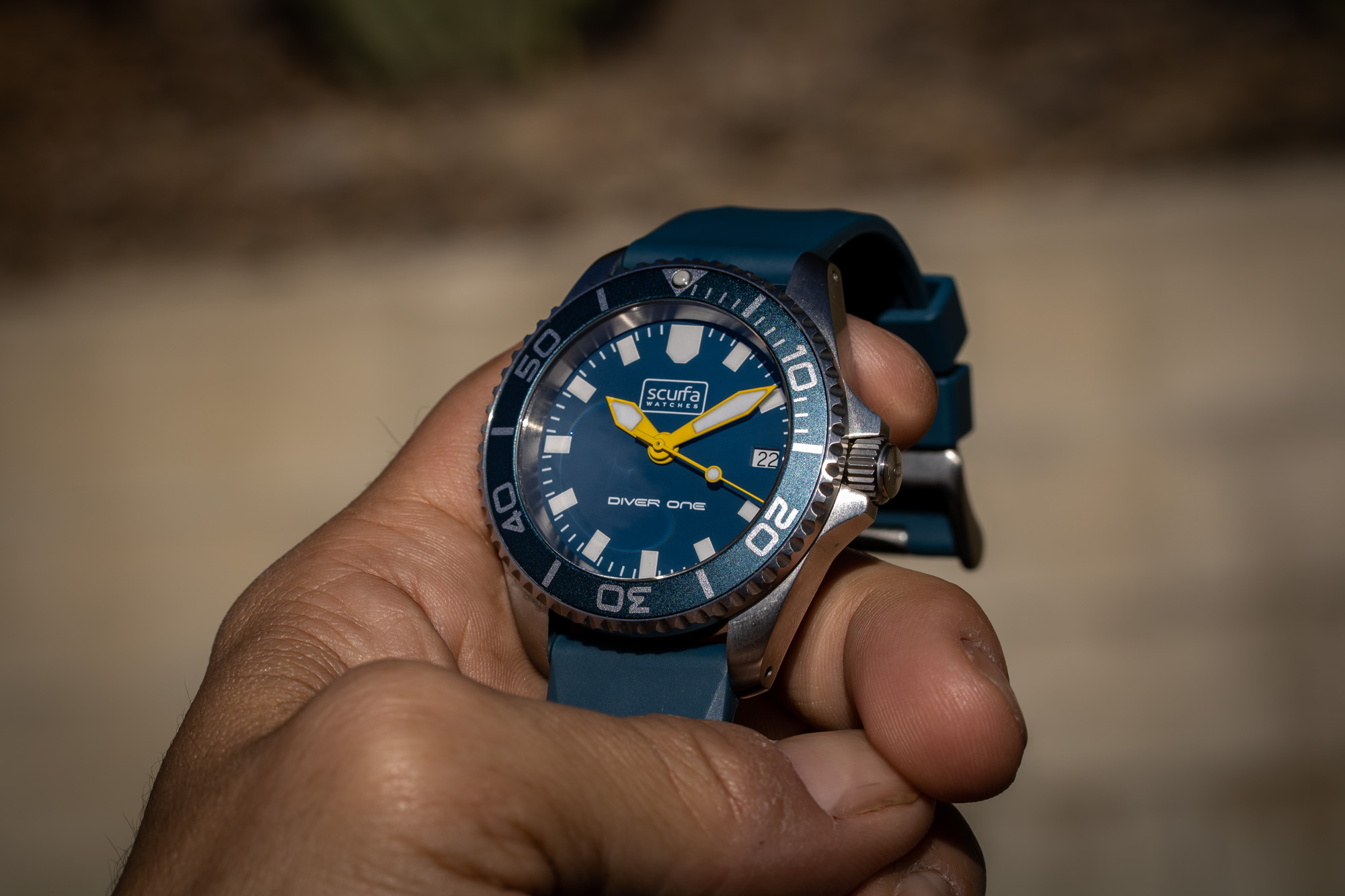
Although Scurfa does make an optional stainless steel bracelet that can be purchased separately for models from the Diver One collection, all of the standard-production watches are fitted with 20mm two-piece rubber straps. Loosely based on the design of the Italian leather straps that can be found on many collectible vintage diving watches, this style of rubber strap is the standard option for Scurfa’s Diver One series, and it ultimately offers a more than adequate option. Featuring a thin profile with flat ends, the Scurfa rubber strap doesn’t taper at all; however, the material itself is soft and flexible, and the strap is ultimately quite comfortable on the wrist. Fitted to the end of the strap is a thick stainless steel pin buckle that features a wide flat tang and brushed surfaces to match the case. Just like the rest of the watch, the rubber strap fitted to the Scurfa Diver One D1-500 isn’t exactly luxurious in its overall execution, yet it is accompanied by an unmistakable perception of quality. It ultimately makes for a highly practical strap option with enough sizing holes to suit a wide variety of wrists.
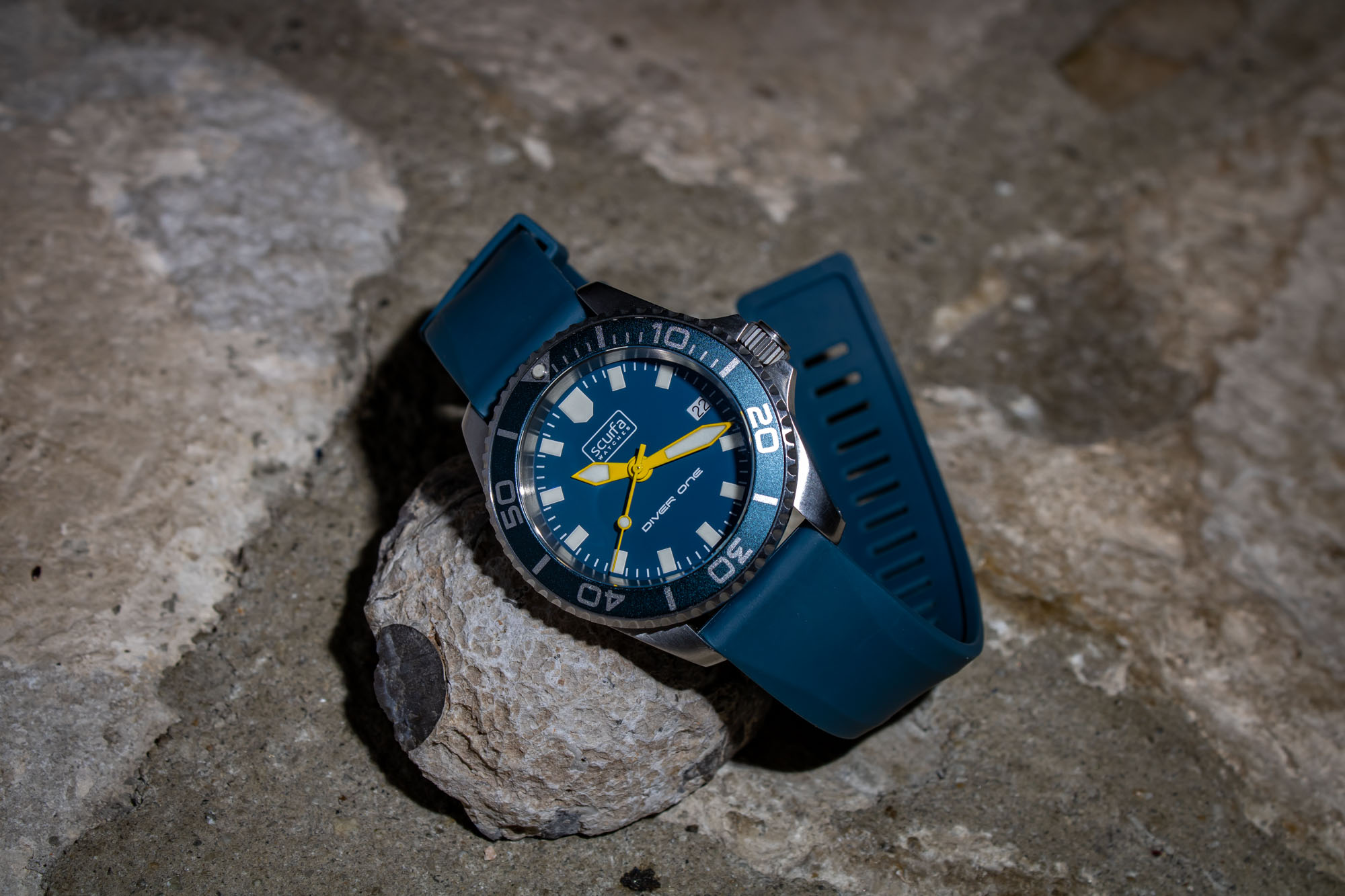
At the end of the day, you can spend a small fortune on a luxury dive watch with a helium escape valve, yet you still won’t receive one that is as true to the spirit of this purpose-built category of timepieces as the Scurfa Diver One D1-500. Given that virtually no one actually needs the functionality provided by a helium escape valve, the main reason why people are attracted to them is that they represent the most professionally-oriented and purpose-built category of dive watches. While premium models such as the Rolex Deepsea Challenge can quite literally venture to the deepest point on Earth and cost nearly as much as an entry-level luxury automobile, almost no real-life deep sea divers are actually using these massively expensive and over-built watches. They are instead wearing actually affordable alternatives like the Scurfa Diver One D1-500, which will set you back approximately $250 USD, depending on the specific model and that day’s currency exchange rate. All of Scurfa’s actual retail prices are listed in British pound sterling values, and even if you opt for one of the more expensive titanium models, you are still only looking at an official retail price of £207.50 GBP. These days, there are plenty of options when it comes to budget-friendly dive watches with helium escape valves, but you will be hard-pressed to find a more compelling option for less than $300 than one that was actually designed by a professional saturation diver himself. For more information on the Scurfa Diver One, please visit the brand’s website.

